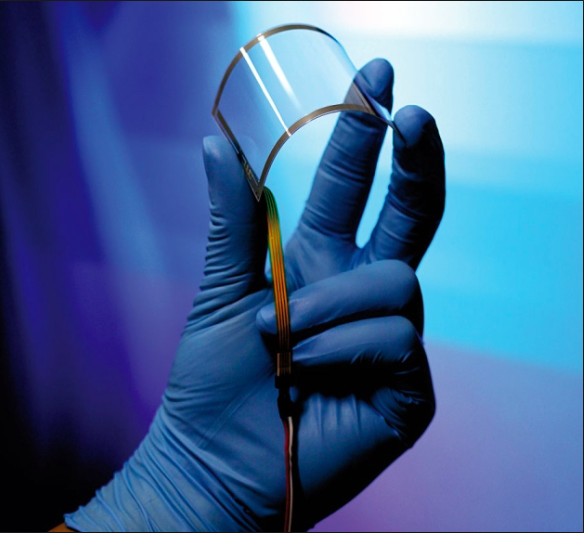TM editors’ note: This article discusses a penny stock and/or microcap. Such stocks are easily manipulated; do your own careful due diligence.
Investors are always on the lookout for the next big thing. The piece of technology that will bring science fiction to life and transform the world. Occasionally this promise of the future leads to periods of investment mania. Where investors eager to own a piece of the future crowd into speculative new ventures, remember the 3D printing bubble or more recently, blockchain and crypto currencies? More often than not, these periods of mania do not last and interest in new technologies fizzles until only the true believers and innovators remain, to quietly develop the technology. One such technology that promises to revolutionize our lives but that has drifted from public view is graphene.

Graphene is an emerging material made up of a single layer of carbon atoms that are bounded together in a repeating pattern of hexagons. The material is a million times thinner then paper yet stronger than a diamond and 100-300 times stronger than steel. It conducts electricity 200 times faster than silicon and is incredibly flexible. It was discovered in 2004 by University of Manchester Professors Andre Geim and Kostya Novoselov, who ended up winning the Nobel Prize in physics for it in 2010. Since then, billions of dollars has gone into graphene research and hundreds of startups have popped up hoping to advance the material that promises to lead to revolutionary new technologies that can change our lives.
The uses for graphene are potentially limitless, by being the thinnest, strongest, lightest most heat and electricity conductive material known to man it can be used to advance countless technologies. So far some of the biggest emerging uses for graphene include its use in solar cells. With the materials conductive properties it is possible to create more efficient solar cells that are hundreds of thousands of times thinner and lighter then silicon cells. Imagine the implications of making solar cells easier to transport and install, that alone could solve the worlds energy problems.

Picture of a Sheet of Graphene
Graphene could also lead to more powerful and smarter computers by making it possible to make transistors lighter and thinner. Adding more transistors to a computer chip makes it more powerful. Suddenly creating computer chips powerful enough to support machine learning and artificial intelligence does not seem too far out of reach (sorry for all those worried that Siri will take over the world). Graphene’s superior conductivity and translucent properties also makes it a perfect coating for touchscreen devices and its flexibility makes it possible to create bendable electronics and paper that connects to the internet. Imagine a laptop that you could bend together and put in your pocket! The material’s strength and light weight also mean that it can be used to replace Kevlar in protective clothing and make clothes that could charge your electronic device just on contact.
Another exciting use for graphene is its potential to advance battery technology. Anybody who has been following the cobalt and lithium boom knows that battery materials are a huge and highly lucrative deal. Graphene’s use in batteries is also more than just theoretical. In November of 2017 researchers at Samsung’s Advanced Institute of Technology announced that they have developed a graphene ball, a material which would allow lithium-ion batteries to charge 5 times faster and have 45% more capacity. In theory, a battery based on a graphene ball could be fully charged in only 12 minutes. This technology, which is best described in the November 2017 edition of science journal, Nature Communications, (whose link I have included here), could make charging an electric car as easy and quick and as filling up a gas tank. These advances in battery technology could lead to the faster adaptation of electric vehicles and could mean your personal electronics could last days on a single charge.

Image of Samsung’s Graphene Ball
With all these advanced technologies made possible by graphene, you might be wondering why you are not already living inside your favorite science fiction show. The answer is, graphene is still in its infant stage and not currently mass producible to the point where it is cheap enough to produce broadly. Development of high-quality graphene is also very expensive and difficult which makes creating a practical supply chain virtually impossible. In fact, this is what led to graphene’s fall from the public eye in the first place.














Leave A Comment